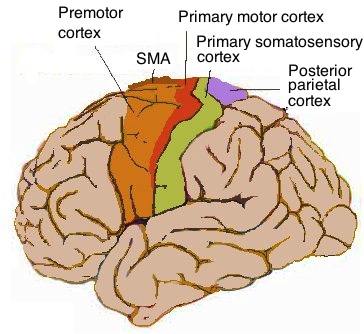Everything in the Universe is a fruit of chance and necessity.
Democritus, in ancient Greece, around 400 BC.
Not just philosophers, but scientists too have subscribed to this concept. Molecular biologist Jacques Monod (Nobel laureate in Medicine and Biology 1965) explained the significance and relevance of chance and necessity in biology in his book bearing the same title. It looks like even cancer could be a matter of chance. So far two factors have been implicated in cancer: genetic predisposition and/or environmental factors. "Environmental factors" a huge black box, would contain anything that is not genetic. For example smoking, pollutants, pesticide, radiation, junk food, unhealthy life style.......runs into a long list. In a recent issue of Science Tomasetti and Vogelstein suggest that there is a third factor- an element of chance (1). Based on a statistical analysis of available data, they state that ".......only a third of the variation in cancer risk among tissues is attributable to environmental factors or inherited predispositions; vast majority of the rest, is due to "bad luck". And they trace this luck factor to the random (stochastic- if you prefer a more scholarly term ) mutations during the normal process of DNA replication in healthy, non cancerous stem cells.
Little unsettling indeed. But they present supporting data. It is known that certain tissues are more prone to cancer than others. For example lung cancer is more common than pelvic bone cancer. Incidence of brain tumor in spite of the protective blood-brain barrier, is much higher than that of the small intestine where epithelial cells constantly encounter more toxic chemistry. Within the food processing zone itself, large intestine is at much higher risk than either stomach or small intestine. Why this variation? Are there missing factors? That is the question Tomasetti, a mathematician and Vogelstein, a cancer geneticist, both at different institutions under the umbrella of Johns Hopkins Medical School, asked.
They decided to focus on the stem cells in selected tissues. Stem cells have the power to self replicate and are responsible for the architectural integrity of a given tissue. Recent studies have unraveled a lot of information about them. As stem cells self replicate, random mutations which are not necessarily carcinogen induced can occur. By simple reasoning, as frequency of cell divisions shoots up, so will the probability of stochastic mutations. Mutations could be innocuous by themselves. But could they spell danger collectively? Could they function as a defect/error that leads to cancer? Two parameters needed to be estimated for the statistical modeling of such a situation. : (i) the lifetime risk of various tissues developing cancer and (ii) lifetime number of stem cell divisions in a given tissue. Tomasetti and Vogelstein selected 31 tissue types for which these two parameters were available. A correlation plot substantiated their hypothesis. Colorectal tissue which registered about trillion stem cell divisions, had a high lifetime risk almost close to 1, while pelvis osteosarcoma with just over a million stem cell divisions ranked low.
Many researchers were quick to protest.(2). Main objection was to the statement "we show that these stochastic influences are in fact major contributors to cancer overall, often more important than either hereditary or external environmental factors". Was the process of collecting and interpreting the data statistically sound? Was the data skewed? Was the sample size and spread sufficient? Genuine doubts. But more than anything I guess the scientific community is angered by the terminology "Bad Luck".
During a recent interview the duo likened their conclusions to the probability of a motor vehicle accident. Consider your body to be a car; the make and model of the car define your genetic makeup. Road, weather conditions etc. reflect the environmental factors. Even if your car is in top condition, and the weather perfect, you can't totally eliminate the probability of an accident. (In this scenario there is no place for the "other" erratic driver). You can only be careful to a limit, beyond that it is chance.
The message I got was this- go for regular check up; early detection could minimize the risk factor.
Tailpiece: Bad luck indeed!
The plan was to view moonlit Taj Mahal ; but unseasonal downpour intervened. Two views from our hotel balcony.
 |
| At dusk |
 |
| In daylight |
 |
| The usual |
References
1. Variation in Cancer risk among tissues can be explained by the number of stem cell divisions. C. Tomasetti and B. Vogekstein, Science 2 January 2015, vol. 347, issue 6217 pages 78-83.
2. Letters : On Cancer risk : Science 13 Feb. 2015 Vo;l. 347, issue 6223, pages 727-730




















